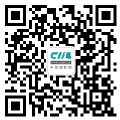On October 22nd, Apple's iPhone Air, boasting the title of the thinnest iPhone ever, finally made its debut in the Chinese market. Its global rollout had been postponed due to delays in securing commercial approval for its eSIM technology. Marketed primarily on the basis of its ultra-slim 5.6-millimeter profile and featherlight 165-gram weight, the new device has, however, failed to ignite much enthusiasm among consumers. During the pre-sale phase, the official Apple website witnessed its stock depleted within a mere 5 minutes, and several models on JD.com also quickly went out of stock. Yet, post-launch, the iPhone 17 Pro stole the spotlight at Beijing's Sanlitun store, whereas at the Shanghai outlet, there were no long queues for the iPhone Air, although certain color variants did sell out by morning. Shoppers find the design attractive but are holding back due to the absence of a physical SIM card slot, the hefty price tag, and the perceived compromises in features. Industry analysts note that market demand has not lived up to projections, prompting the supply chain to slash shipment quantities and trim production capacity. By the first quarter of 2026, a staggering reduction of over 80% in production capacity is anticipated.

-
 C114 Communication Network
C114 Communication Network -
 Communication Home
Communication Home


